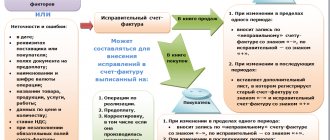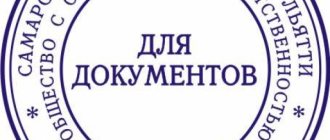An invoice is a necessary document not only in accounting, but also in the office work of an organization in general. There are many nuances in filling out this document, ignorance of which can lead to problems with the Tax Inspectorate.
This is a form confirming the fact of shipment of goods or provision of services at a set cost. This is not the only function of this form. What is an invoice? An accounting form required to confirm the amount of VAT both on the sale of goods (services) and input VAT to prove the right to a tax deduction in order to avoid double taxation. The presence of an invoice is a prerequisite for crediting the amount of VAT on material resources (work, services) that were purchased by the taxpayer.
This is a very important document, often used in legal disputes, so it must be filled out correctly.
Who makes up
An invoice is issued by the seller (contractor, performer) to the buyer or customer. Drawing up this form is mandatory for business entities engaged in the sale of goods, performance of work or provision of services.
Why an invoice is needed has already been said (let us repeat briefly: it confirms the issuance and payment of VAT), accordingly, you need to fill out such a form:
- individual entrepreneurs and enterprises subject to the general taxation system (unless their services fall under the exceptions established by clause 2 of Article 149 of the Tax Code of the Russian Federation);
- Individual entrepreneurs and companies that partially work on OSN (for relevant types of activities), also combining it with UTII.
Taxpayers who have chosen UTII, the simplified tax system, or the patent system as their taxation system are exempt from paying VAT, with the exception of certain cases.
Why do you need an invoice if companies and individual entrepreneurs do not have to pay VAT? This may be required if there is commercial interaction with organizations and individual entrepreneurs that are VAT payers. In addition, the parties may decide to apply the invoice on their own initiative.
Exposure deadlines
The general rule is as follows: an invoice is issued within 5 days from the date of transfer (shipment) of goods, performance of work or provision of services. In this case, calendar days are taken into account. This norm is enshrined in paragraph 3 of Art. 168 Tax Code of the Russian Federation. The rules are the same for both paper and electronic invoices. Also, according to paragraph 3 of Art. 168 of the Tax Code of the Russian Federation, when preparing advance documents, this form must be issued within the same 5 calendar days, but from the moment of receipt of payment for future deliveries, performance of work, provision of services.
Buyer mistakes
With a selective approach to the right to deduction
It should be remembered that the deduction of VAT on the advance payment is the buyer’s right, and not an obligation (clause 1 of Article 171 of the Tax Code of the Russian Federation). If he uses his right to deduct tax on goods (work, services) received, and not on their prepayment, this does not lead to an understatement of the tax base and the amount of VAT payable to the budget. But if the right to deduct is used selectively, this can lead to errors. When accepting paid goods (works, services) for accounting, you will have to check whether a deduction was claimed when transferring the corresponding advance payment.
When filling out the purchase book
In order to accept VAT as a deduction, the buyer must register a shipping or advance invoice received from the seller in the purchase book (clauses 1-2 of the Rules for maintaining the purchase book).
The advance invoice is recorded in the purchase ledger for the quarter in which it is received from the seller who received the advance. Payment information is reflected in column 7 of the buyer’s purchase book. In this case, columns 4, 6, 8a, 9a, 10–12 of the purchase ledger are not filled in (clause 7 of the Rules for maintaining the purchase ledger).
A shipping invoice can be registered in the purchase book for any quarter, starting from the quarter in which three conditions are met (clauses 1, 1.1 of Article 172 of the Tax Code of the Russian Federation):
1) the buyer has an invoice received from the seller;
2) the goods (work, services) under this invoice have been accepted for accounting, that is, the buyer has signed a consignment note, an act of completion of work or provision of services;
3) three years have not elapsed since the goods (works, services) were accepted for accounting (letters of the Ministry of Finance dated 08/06/2015 No. 03-07-11/45515, dated 05/12/2015 No. 03-07-11/27161, dated 02/12/2015 No. 03-07-11/6141). For example, the last quarter in which you can claim a VAT deduction on goods accepted for accounting in the first quarter of 2015 will be the first quarter of 2021.
It is possible that you receive an invoice after the end of the quarter in which goods (work, services) were accepted for accounting, but before the 25th day of the month following this quarter. Then VAT can be deducted by registering this invoice in the purchase book in the quarter in which goods (work, services) were accepted for accounting (clause 1.1 of Article 172 of the Tax Code of the Russian Federation, letter of the Ministry of Finance dated 02.02.2016 No. 03-07-11/4712 ).
To avoid double deduction - both from the advance payment and from the delivery - the buyer is obliged to restore the VAT previously accepted for deduction from the advance payment in the tax period in which the amount of VAT on purchased goods, works or services is accepted for deduction (clause 3, paragraph. 3, Article 170 of the Tax Code of the Russian Federation). When restoring VAT, the buyer should register the invoice on the basis of which the advance deduction was applied in the sales ledger. If the buyer has not previously deducted the amount of VAT from the advance payment, he does not need to subsequently restore the tax.
VAT+ will check whether the buyer has restored the VAT previously accepted for deduction on the advance payment
To learn more
When an invoice is not needed
The legislation specifies cases when an invoice is not a mandatory document, and the completion and execution of a transaction is confirmed by other data: an invoice, an invoice for payment. Based on the regulations, the invoice is not filled out under the following circumstances:
- the transaction is not subject to VAT (Articles 149 and 169 of the Tax Code of the Russian Federation);
- when selling goods for cash (in this case, a check or a strict reporting form is sufficient);
- when applying simplified taxation regimes;
- a legal entity - an employer transfers goods to its employee without providing counterpayment, that is, free of charge (according to Letter of the Ministry of Finance of the Russian Federation dated 02/08/2016 No. 03-07-09/6171);
- when sending goods for export, taxed at a zero rate, if the buyer is not a VAT payer, if the shipment took place no later than 5 calendar days from the date of receipt of the advance payment (according to Letter of the Ministry of Finance of Russia dated January 18, 2017 No. 03-07-09/1695).
Invoice journal
All received and issued invoices are entered into special journals that must be maintained by both buyers and suppliers.
In October 2014, a new form of the magazine was approved. Now the accounting journal is also maintained by those who do not pay VAT in the case of receiving or issuing invoices under commission agreements and agency agreements. At the same time, there is no need to reflect in the journal transactions that are not subject to VAT, especially since invoices themselves are not drawn up for such transactions from January 1, 2014.
From 2015, intermediaries will also need to duplicate invoice logs in electronic form, as they are required to send the logs to the Federal Tax Service on a quarterly basis via an electronic communication channel.
Kinds
There are three main types of invoice:
- ordinary, shipping. This document confirms that the goods have been transferred. This is the most common type of invoice, but legislation provides for more than just one;
- advance payment, written out and drawn up upon concluding a contract and receiving an advance payment for work performed or services rendered. This form does not confirm the fact of transfer;
- adjustment, filled in when the price or quantity of shipped products changes.
Requisites
What does an invoice look like? This is a table with columns about the product and a header providing information about the parties to the contract.
Required details:
- number and date;
- name, address and tax identification number, checkpoint of the buyer and seller, as well as the shipper and consignee, if any (please note, according to the new rules, the address must be written strictly as it is indicated in the Unified State Register of Legal Entities, you can check it on the Federal Tax Service website in the “Check yourself and the counterparty” section) );
- number of the payment document if an advance was received for future deliveries;
- product name and unit of measurement;
- quantity;
- currency (ruble code - 643, US dollar - 840, euro - 978);
- price per unit of measurement;
- full cost;
- excise tax amount;
- tax rate;
- the amount of tax to be paid;
- total cost including taxes;
- country of origin of the goods (codes are set in accordance with the OK classifier (MK (ISO 3166) 004-97) 025-2001); if goods are produced in Russia, a dash is added;
- customs declaration number (if the goods were not produced in Russia);
- signatures of the manager and chief accountant (or an authorized person - by order or power of attorney) - on a paper document; enhanced qualified digital signature - on electronic.
Among the latest changes is the line
“Identifier of a government contract, agreement (agreement).” Applies to deliveries under government contracts. The Filling Rules specifically indicate that the line is filled only if there is an identifier. If absent, the line remains blank (there is no need to put a dash).
Invoice – invoice without VAT and erroneous payment purpose
There are often situations when an entrepreneur is in a special mode, issues an invoice without VAT, and the buyer inadvertently transfers the payment and in the purpose of payment indicates “Including VAT” and its amount.
When the tax authorities see this purpose of payment, they will, at a minimum, demand an explanation. They may even suspend account transactions and write off the alleged arrears directly from the account.
To prevent this from happening, you need to carefully check all receipts at the time of posting the bank. If an incorrect payment purpose is discovered by the accountant independently, then the buyer must immediately request a letter clarifying the payment details . Usually, the tax inspectorate, if an error is discovered, is satisfied after presenting such a letter.
Filling by lines
Rules for filling out an invoice line by line:
- the first line is the serial number of the document in accordance with the established document flow rules;
- the date of preparation should not be earlier than the date of the original document;
- date and correction number are filled in if necessary;
- in the line “Seller” the full or abbreviated name is indicated in accordance with the constituent documents;
- the postal address is indicated in the “Address” line;
- in line 3, “same person” is entered if the seller and the shipper are the same person. Otherwise, you must provide the shipper's mailing address. When filling out an invoice for services and property rights, a dash is placed in this line;
- in term 4, according to the same rules, the data of the consignee is written;
- in line 5 “to the payment and settlement document” a dash is placed if the form is drawn up upon receipt of payment, partial payment or for upcoming deliveries using a non-cash form of payment;
- for line 7, the currency codes are given above.
The columns are filled in as follows:
- Column 1 indicates the name of the product or service provided;
- in column 2 - unit of measurement, if possible. A dash is placed upon receipt of payment or partial payment for upcoming deliveries. Columns 2 and 2a are filled out taking into account the All-Russian Classifier of Units of Measurement, introduced by Decree of the State Standard of the Russian Federation dated December 26, 1994 No. 366;
- Column 3 indicates the quantity or volume of the goods. If this indicator is not defined or is missing, you must put a dash. A dash is also added when payment or partial payment is received for upcoming deliveries;
- Column 4 (product price) is filled out according to similar rules;
- in column 6, if there is no excise tax amount, a corresponding note is made;
- in column 7 (tax rate) for transactions specified in paragraph 5 of Article 168 of the Tax Code of the Russian Federation, an entry “without VAT” is made;
- Column 8 is filled out according to similar rules;
- columns 10-12 are filled in if the country of origin of the goods is not Russia, in accordance with the OK of the world (MK (ISO 3166) 004-97) - 025–2001.
This is what the completed document looks like.
If the form is an advance or correction form, this must be indicated, as well as what changes are being made to the form and on what basis. The signature of authorized persons is required: manager (trustee), chief accountant. A seal is not a mandatory requirement, but can be supplied (for example, at the buyer’s request).
All forms are stored in chronological order for at least 4 years, recorded in the Journal of received and issued invoices, in the Book of Purchases and Sales in order to be able to verify the calculation and payment of VAT.
Is it necessary to reflect an invoice without VAT in the purchase ledger?
As you know, invoices that are at the disposal of the buyer are reflected in the purchase book. But when receiving an invoice without VAT, the question arises: is it worth reflecting such a document in accounting?
We know that the purchase book collects all VAT amounts, which reduce the amount of tax for transfer to the budget. In other words, each invoice included in the purchase book increases the tax deduction. It is not for nothing that a document without VAT is called “zero”, because it does not contain the amount of VAT that helps reduce tax. Accordingly, following common sense, it is absolutely not necessary to reflect invoices without VAT in accounting, since they do not carry any semantic load. The tax office cannot even accuse an entrepreneur of incorrectly maintaining a purchase book in such cases. The courts make decisions not in favor of the tax authorities in such a situation.
The issuance of invoices by taxpayers who are not VAT payers is not required by law. This issue is left to the discretion of each taxpayer. If such a document is nevertheless drawn up, you need to carefully monitor the correct completion of all details, and special attention must be paid to filling out the tax rate. If an entrepreneur receives an invoice without VAT, then it is also not necessary to accept it for accounting, since such a document cannot affect the amount of taxes payable to the budget.
Common Mistakes
Errors that are most often encountered when filling out an invoice and their consequences:
- if the name, TIN, and address of the organization are incorrectly indicated or missing, it is difficult to establish the authorship and addressee of the document, so it may be declared invalid;
- if it is impossible to determine from the document what goods were transferred or service was provided, VAT will not be refunded;
- incorrect indication of currency, incorrect indication of the quantity of goods, errors in prices, incorrect calculation of cost lead to the fact that the exact cost of the goods cannot be determined. Thus, the document becomes uninformative;
- incorrect calculation of VAT. The absence of a VAT amount may also raise questions from regulatory authorities.
Minor errors in the form of missing characters, capital letters, or inaccuracies in payment details are usually not pursued by the tax authorities. It is also possible to abbreviate names if such an abbreviation allows you to identify the enterprise or product.
Tax rate and amount
Well-formed invoices are submitted to a representative of the Federal Tax Service for VAT calculation, and they are also necessarily studied by tax inspectors during desk or field audits.
In the process of filling out the document, VAT is calculated, for which the price of the product or service is multiplied by the tax rate. From 2021, the main rate has increased from 18% to 20%. At the same time, the rate of 10%, which applies to children's goods and food products, remained unchanged.
Reference! Until 2025, a 0% rate is offered for the supply of various goods by air to Crimea and Sevastopol.
If you know exactly the correct rate, it will not be difficult to calculate the amount of tax for each transaction, as well as determine the amount of VAT deduction. Many companies are not required to pay VAT if they operate under special tax regimes, which include ENDV, simplified tax system, PSN, or unified agricultural tax. Therefore, they may not generate invoices regularly. They calculate only a single tax, which replaces several types of fees.
Companies that use simplified regimes often face refusal to cooperate, since suppliers working with VAT will not be able to return part of the tax under such partnership.
Adjustment invoice
When making adjustments, the following rules must be observed:
- changes are made to both copies;
- changes must be endorsed by the seller’s manager or an authorized person (the signature of the chief accountant is not required) and certified by a seal;
- it is necessary to set a date for making corrections;
- erroneous data is crossed out and new ones are entered, indicating the column, and the explanation “Corrected” must be included.
If there are too many errors, it is better to make a new document. The norms of the Tax Code of the Russian Federation do not contain a ban on such an action.
Relevance
The 2021 sample invoice is a transfer document that must be drawn up taking into account the above rules. It must take into account changes made since 10/01/2017.
Let's summarize: invoice - what is it in simple words? In short, this is confirmation of payment and payment of VAT. There are peculiarities of filling out this form, advance or corrective, but the essence does not change. It is in this form that there are signatures of authorized persons who actually confirm the execution of the contract. Therefore, this is an extremely important document that it is advisable to include in contractual obligations. Payers on the general taxation system will also need proof of payment of value added tax.
Where to find a sample and form of an invoice
The invoice form was approved by Decree of the Government of the Russian Federation dated December 26, 2011 No. 1137. The form is currently in effect as amended on October 1, 2017. The current invoice form can be downloaded from our website.
Also on the website you can find a completed sample invoice without VAT.
About the basic rules that should be followed when preparing documents in interaction with an organization operating without VAT, read the article “Basic rules when an organization without VAT works with an organization with VAT .
New uniform in 2021
In connection with the increase in the basic VAT rate to 20%, a new form of invoice was introduced in accordance with the order of the Federal Tax Service of the Russian Federation dated December 19, 2018 No. ММВ-7-18/ [email protected] Changes were made to the electronic format of documents used for exchange via telecommunications communication channels. The order of the Federal Tax Service provides for a long transition period; until December 31, 2019, the right to apply the old format remains. Documents created using old formats must be accepted until December 31, 2022. Tax authorities recommend switching to the new format now in order to improve work efficiency.







